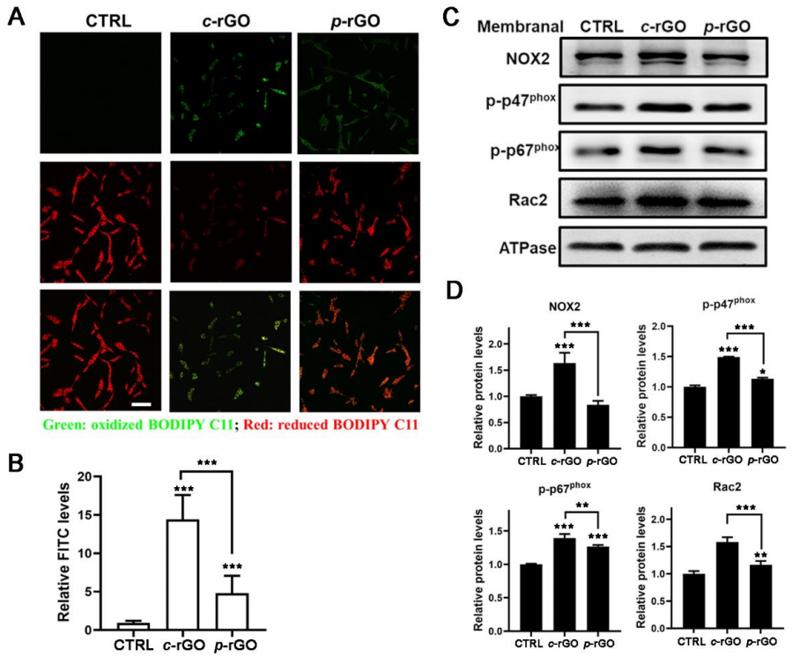Phospho-NCF2 (Thr233) Antibody - #AF4343
| Product: | Phospho-NCF2 (Thr233) Antibody |
| Catalog: | AF4343 |
| Description: | Rabbit polyclonal antibody to Phospho-NCF2 (Thr233) |
| Application: | WB IF/ICC |
| Reactivity: | Human, Mouse, Rat |
| Prediction: | Pig, Bovine, Horse, Sheep, Rabbit, Dog, Chicken, Xenopus |
| Mol.Wt.: | 60kDa; 60kD(Calculated). |
| Uniprot: | P19878 |
| RRID: | AB_2844422 |
Related Downloads
Protocols
Product Info
*The optimal dilutions should be determined by the end user.
*Tips:
WB: For western blot detection of denatured protein samples. IHC: For immunohistochemical detection of paraffin sections (IHC-p) or frozen sections (IHC-f) of tissue samples. IF/ICC: For immunofluorescence detection of cell samples. ELISA(peptide): For ELISA detection of antigenic peptide.
Cite Format: Affinity Biosciences Cat# AF4343, RRID:AB_2844422.
Fold/Unfold
67 kDa neutrophil oxidase factor; Chronic granulomatous disease autosomal 2; FLJ93058; NADPH oxidase activator 2; NCF-2; Ncf2; NCF2_HUMAN; Neutrophil cytosol factor 2; Neutrophil cytosolic factor 2 (65kD, chronic granulomatous disease, autosomal 2); Neutrophil NADPH oxidase factor 2; NOXA2; P67 PHOX; p67-phox; p67phox;
Immunogens
- P19878 NCF2_HUMAN:
- Protein BLAST With
- NCBI/
- ExPASy/
- Uniprot
MSLVEAISLWNEGVLAADKKDWKGALDAFSAVQDPHSRICFNIGCMYTILKNMTEAEKAFTRSINRDKHLAVAYFQRGMLYYQTEKYDLAIKDLKEALIQLRGNQLIDYKILGLQFKLFACEVLYNIAFMYAKKEEWKKAEEQLALATSMKSEPRHSKIDKAMECVWKQKLYEPVVIPVGKLFRPNERQVAQLAKKDYLGKATVVASVVDQDSFSGFAPLQPQAAEPPPRPKTPEIFRALEGEAHRVLFGFVPETKEELQVMPGNIVFVLKKGNDNWATVMFNGQKGLVPCNYLEPVELRIHPQQQPQEESSPQSDIPAPPSSKAPGRPQLSPGQKQKEEPKEVKLSVPMPYTLKVHYKYTVVMKTQPGLPYSQVRDMVSKKLELRLEHTKLSYRPRDSNELVPLSEDSMKDAWGQVKNYCLTLWCENTVGDQGFPDEPKESEKADANNQTTEPQLKKGSQVEALFSYEATQPEDLEFQEGDIILVLSKVNEEWLEGECKGKVGIFPKVFVEDCATTDLESTRREV
Predictions
Score>80(red) has high confidence and is suggested to be used for WB detection. *The prediction model is mainly based on the alignment of immunogen sequences, the results are for reference only, not as the basis of quality assurance.
High(score>80) Medium(80>score>50) Low(score<50) No confidence
PTMs - P19878 As Substrate
Research Backgrounds
NCF2, NCF1, and a membrane bound cytochrome b558 are required for activation of the latent NADPH oxidase (necessary for superoxide production).
Cytoplasm.
Component of an NADPH oxidase complex composed of a heterodimer formed by the membrane proteins CYBA and CYBB and the cytosolic subunits NCF1, NCF2 and NCF4. Interacts with NCF4. Interacts (via the C-terminal SH3 domain) with NCF1 (via C-terminus). Interacts with SYTL1 and RAC1. May interact with NOXO1. Interacts with S100A8 and calprotectin (S100A8/9).
The OPR/PB1 domain mediates the association with NCF4/p40-PHOX.
Belongs to the NCF2/NOXA1 family.
References
Application: WB Species: rat Sample: PC12
Restrictive clause
Affinity Biosciences tests all products strictly. Citations are provided as a resource for additional applications that have not been validated by Affinity Biosciences. Please choose the appropriate format for each application and consult Materials and Methods sections for additional details about the use of any product in these publications.
For Research Use Only.
Not for use in diagnostic or therapeutic procedures. Not for resale. Not for distribution without written consent. Affinity Biosciences will not be held responsible for patent infringement or other violations that may occur with the use of our products. Affinity Biosciences, Affinity Biosciences Logo and all other trademarks are the property of Affinity Biosciences LTD.

